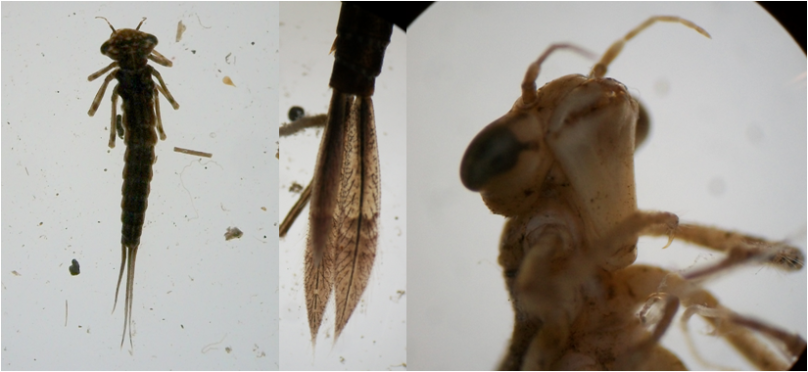So, I get asked all the time “what’s the difference between dragonflies and damselflies?” Here is my response:
What’s in a name?
Dragonflies and damselflies both fall in the order Odonata. An “order” is a level of biological classification which taxonomists (people who name animals) use to distinguish different groups of species. They are animals (kingdom=Animalia), within the animals they are arthropods (phylum=Arthropoda, which literally means “jointed leg”), within the arthropods they are insects (class=Insecta) and within the insects they are odonates (order=Odonata). By comparison, humans are animals (kingdom=Animalia), within the animals they are chordates (phylum=Chordata), within the chordates they are mammals (class=Mammalia) and within the mammals they are primates (order=Primata). Within the order Odonata, there are two sub-orders: the Zygoptera (damselflies) and Anisoptera (dragonflies). What confuses a lot of people (including dragonfly biologists, sometimes) is that the order Odonata is often referred to as “the dragonflies” despite the fact that it also includes damselflies. Attempts at resolving this confusion have led to some people advocating the term “odonates” as a collective term for dragonflies and damselflies, but only time will tell whether this will catch on…
Apart from a few aesthetic differences there isn’t a lot to distinguish the the two groups from one another. Both eat insects (as large as they can manage), although there are reports of dragonflies attacking and killing small birds such as hummingbirds. Both require freshwater to breed, although this can be anything from stagnant swamps to waterfalls. In turn, both are preyed upon by a large number of other animals. Because they consume many animals and are consumed by many others, they are often considered important species within ecosystems.
Telling them apart (adults)
It is fairly easy to tell them apart in the field. Anything that looks like what most people would call a “dragonfly” is a dragonfly. The damselflies are more subtle and dainty (hence the name “damsel” flies). They have been described as “flying neon toothpicks in the grass” and that is a pretty good description! Here’s a comparison of the two groups as you might see them in your backyard:

One of the main differences between the two groups is that dragonflies are much larger, on average, than damselflies, particularly the width of the abdomen. However, the largest “odonate” is actually the helicopter damselfly, Megaloprepus coerulatus, which lives in Hawaii. Also, there are some very small dragonflies and some rather large damselflies so that rule of thumb isn’t always valid. The second main difference is that damselflies will hold their wings over their bodies when perched while dragonflies adopt the characteristic “dragonfly posture” with wings akimbo. The other minor difference is that dragonfly wings are actually different shapes. The hind wing has a lobe at the base which is enlarged and this assists with gliding flight. This difference in wing shape gives the group its scientific name: Anisoptera = “An” (not) “iso” (equal) “ptera” (wing). Damselfly wings are approximately the same shape.
Telling them apart (nymphs)
Both groups have nymphs (as it is called in species such as these where the juvenile stages resemble the adult – where the young form looks “more like a maggot” they are termed “larvae”) which live in the water and feed on insects and fish. If you ever come across these critters in the water they can be easily distinguished. Here is a photograph of a damselfly nymph that I took from my specimens:

The left image is the full nymph. The damselfly nymphs can be distinguished from dragonfly nymphs because they have “caudal lamellae” which project from the rear end. These are shown in the middle photograph and are actually gills that the nymph breathes through. There are three and these are only found in damselflies. In the right photo you can see the underside of the head with the “labium” or “mask”. This is the triangular shape which has two pincer-shaped claws on the front. The nymph catches prey by shooting this forward suddenly to capture small insects, fish or tadpoles. The nymph then draws the prey back it its mouth where it is chewed up and consumed. By contrast, here is a dragonfly nymph:

You can see that the caudal lamellae are not found in dragonfly nymphs. Instead, the gills are inside the body. In fact, these internal gills can build up such pressure that the animal can squeeze its body cavity and shoot water out of its back end to propel itself through the water! I have shown the same view of the mask as before to illustrate the similarities between these guys and their damselfly cousins.

plz send me the difference between damsel and dragon fly…in any eye b bases.
[…] Here, I’m going to show some pretty (I think, anyway) photos of some bugs! In a post on the differences between dragonflies and damselflies, I included a couple of photographs that I took while identifying invertebrates from some field […]
Could I use your picture comparing dragonflies and damselflies in an article I am writing for a new youth online publication through Entomology Society of America? What about your other pictures, such as the nymphs? If so, could you send written permission? Thank you.
[…] is why I have spent the last seven years studying them. I have posted about a range of species before. One of the many reasons that they are fascinating lies in the internal organs of the larvae. […]
I also would like to know if I could use your comparison picture of Drag vs Dam. Please email me if you see this comment. Thank you!